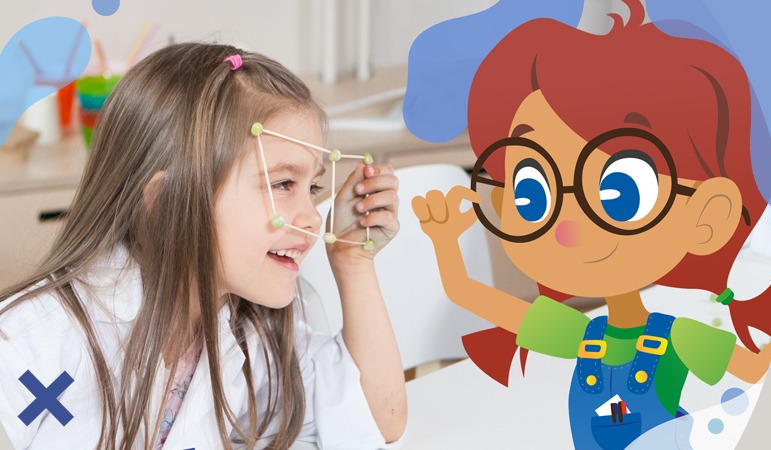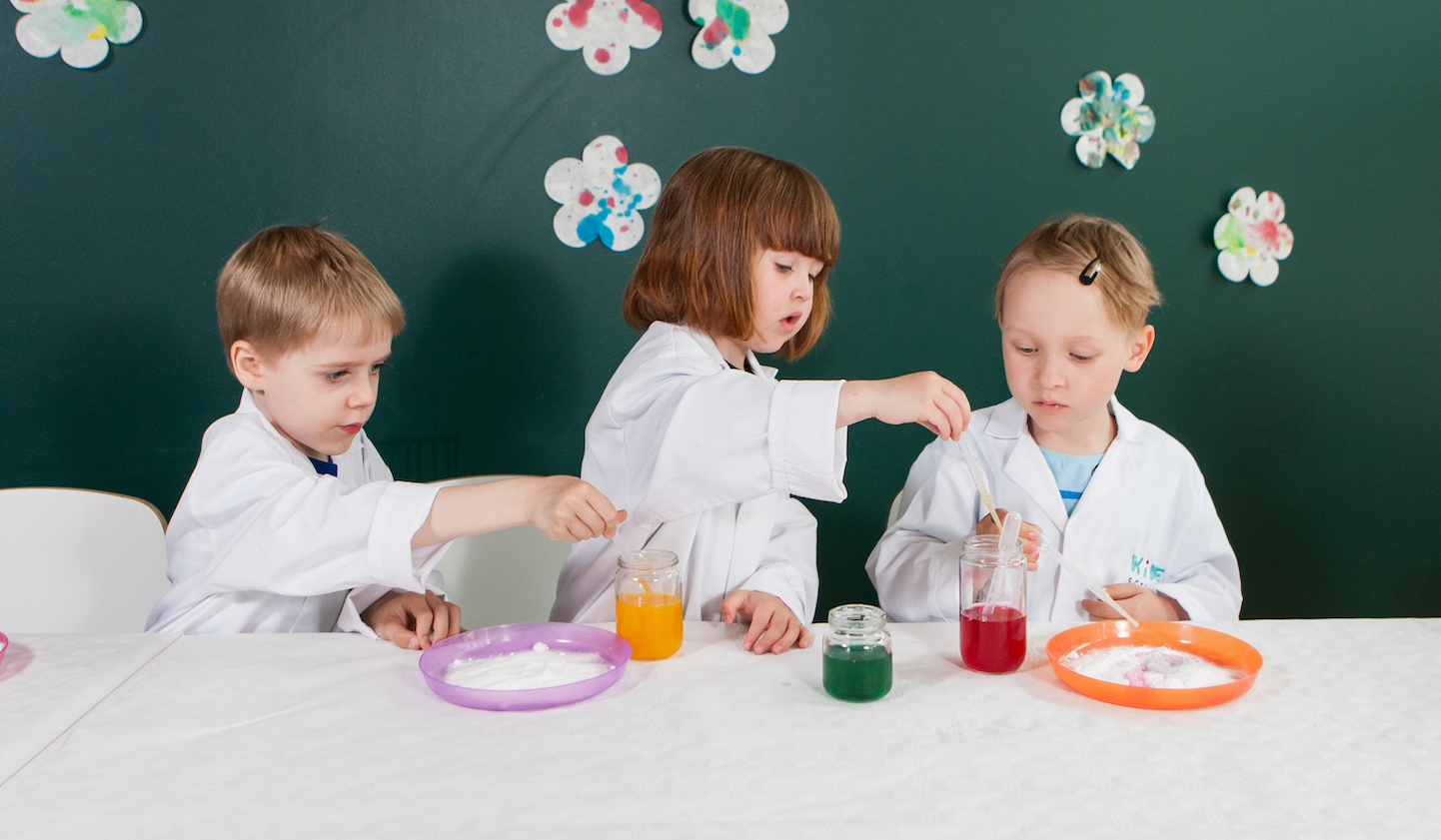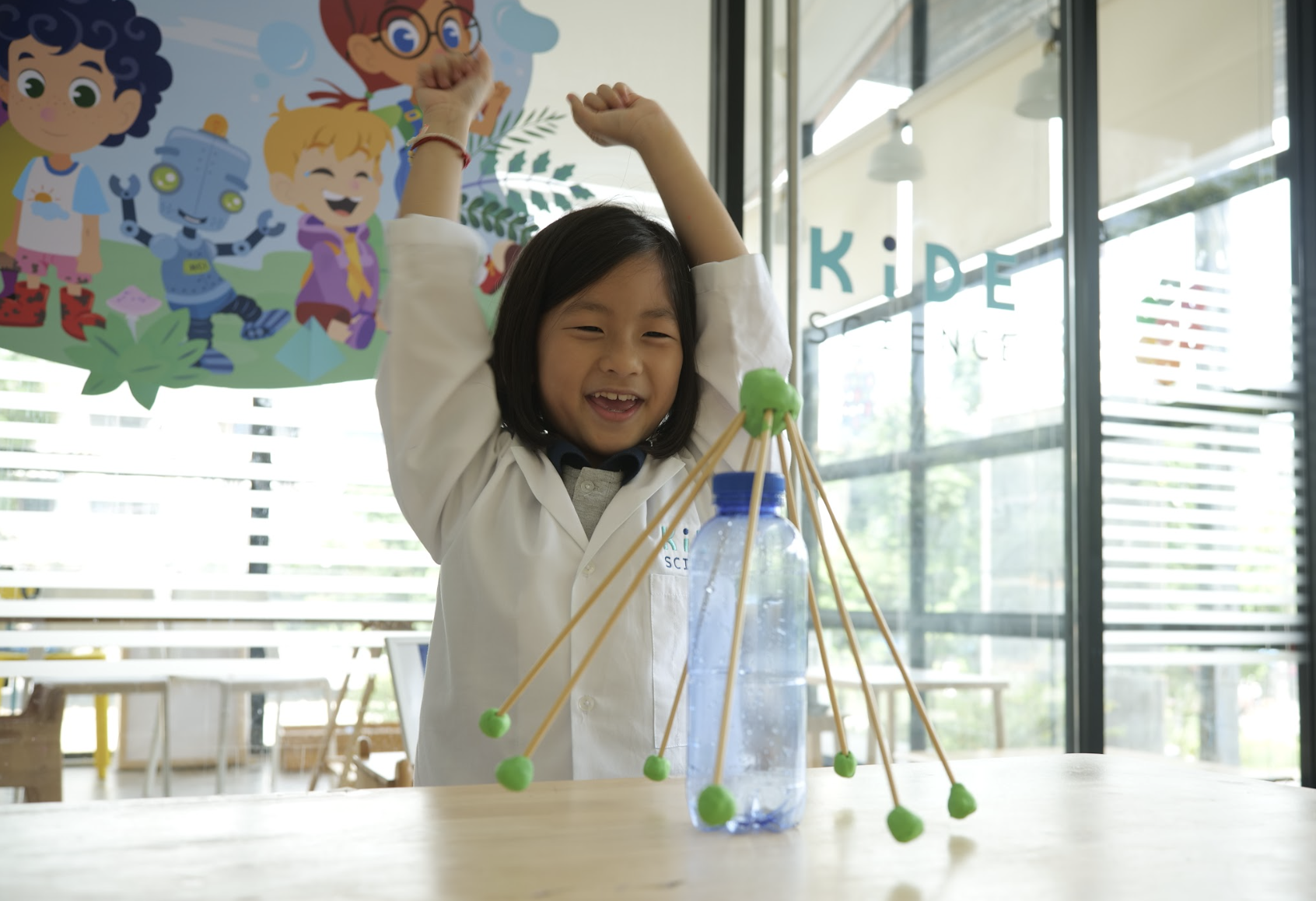Girls in Science
Let’s look at why we are concerned about girl’s interest in science.

Girls in Science
From Jenni Vartiainen, Head of Research and Co-Founder of Kide Science:
Let’s talk about girls. More precisely, let’s talk about girls in science. For one: I’m a girl who’s very into science. I’m Jenni, a PhD in Science Education, and originally a chemistry and mathematics subject teacher. Nowadays, I am a researcher and I study how to provide every child a possibility to get excited about science. I’m also a co-founder of Kide Science, which promotes the same agenda all over the world.
Let’s look at why we are concerned about girl’s interest in science. Solving complex, growing issues in the world such as climate change and mass extinction requires science. Because the problems are so multifaceted, we need experts with a wide variety of skills, and, of course, excellent cooperation abilities. Unfortunately, however, we often see that girls feel like they don’t have a place in science.
So why don’t girls feel like they belong in science? Take a moment and picture a scientist in your head: what comes to your mind? According to research, when we ask people to describe a scientist, the most common generalization is a white, older male with eyeglasses and messy hair. Truth is, society has a very narrow image of who is capable of doing science. It’s no wonder why girls feel like they don’t have a place in science. We really need to widen the image of who can be a scientist to harness all possible expertise in the field of science, no matter the person’s gender.
All children are born with a strong inner curiosity to explore and experiment with how the world functions. We see this in children as an endless curiosity and tendency to engage in wondering and asking questions. But if all children are inherently interested in science: What happens to girls?
Lack of interest for girls in science is complex. One way to help fix it is to consider what kinds of possibilities we can offer to interest girls in science, and we know that interest is tightly connected to identity. Identity starts its construction during the early years. Children shape the idea of themselves by identifying what they enjoy, what they are interested in, and what they are good at. It's a hidden cultural practice that we tend to offer boys more opportunities to engage in science and technology activities than girls. This is not due to the choice of children, but how adults steer children’s idea of what they should be interested in. When children are young, boys and girls are equally interested in scientific phenomena.The difference starts accumulating from the messages that surround the cultural setting.
We should pay careful attention to how we talk about science with girls, and make sure we offer the same activities to both boys and girls. We should appreciate every child on an individual level, not as a representation of gender. Meanwhile, we know that the world is full of different kinds of scientists with different looks, temperaments, genders, and ages. Girls should have more role models in public discussions to relate with. To sum it up: for us to support girl’s interest in science, adults should allow young girls to build interest in science by letting them act with science related activities.
Kide Science is a research-backed, play-based STEAM education pedagogy for teachers of 3-to-8-year-old scientists everywhere. In our lessons, traditional, theory-first science learning is swapped for exciting, interactive science play.
Start your free trial of Kide Science to get story-based lesson plans for teachers.
Related articles
At first glance, science and language education are opposites. If you take time to learn science,...
Here are three things which make us different from every other educational solution out there.
The annually celebrated day highlights the significant role of science in society and the need to...

.png)
